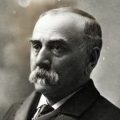Georg Dionysius Ehret
The Greatest Artist-Illustrator
Today is the anniversary of the death of the botanist and the incomparable botanical illustrator Georg Dionysius Ehret who died on this day in 1770.
Ehret was born in Heidelberg, Germany, to Ferdinand Christian Ehret, who was a gardener and also had a talent for drawing. He taught his son both skills- gardening and drawing - before he died.
Ehret made his way to Regensburg. There, he met an apothecary who hired him to draw of specimens from his herbarium and garden. Ehret earnestly took on the job, attracting over 500 pieces in one year. Taking advantage of his young employee, the apothecary fired Ehret and told him he should have completed 1,000 drawings and was fired. It was basically his way of avoiding paying Ehret.
After this dreadful experience, Ehret made his way to England and worked at the significant botanical gardens - Including Chelsea Physic.
Isaac Rand, the first director of the Chelsea Physic Garden in London, told Ehret to paint the rare plants in the garden. The uniqueness of the specimens added to the demand for Ehret's work. As a result, Ehret was on friendly terms with the plant collectors and naturalists of his time. Chelsea was formative professionally and personally for Ehret; He married the head gardener's sister-in-law, Susanna Kennet.
In The Art of Botanical Illustration, Wilfrid Blunt noted that,
“By the middle of the century he had become a popular figure in London society: the highest nobility in England clamored to receive instruction from him,”
Indeed, the wealthiest woman in England, Margaret Cavendish Bentinck (the Duchess of Portland), gladly retained Ehret as a drawing instructor. Struck by the luminescence of his work, and ultimately she would buy over 300 of his paintings.
In 1737, Ehret was hired to draw by Sir Charles Wager, First Lord of the Admiralty. In August of that year, Wagner's personal garden is where Ehret first observed the Magnolia grandiflora flowering. The bloom was so inspiring that Ehret walked for an hour each way, from Chelsea to Wagner's house (in Fulham), to see and sketch every stage of the Magnolia grandiflora; from bud to full flower. Ehret's work provided the world with the first Magnolia to be illustrated in England.
Beyond his work in England, Ehret traveled throughout Europe in pursuit of his craft. He met Linnaeus in Holland when he was visiting the botanical garden in Leiden.
Linnaeus taught Ehret exactly how he wanted plants to be dissected and drawn. By this time, Ehret felt that his drawings were already aligned with Linnaeus, but the calibration didn't hurt; Ehret's work made it possible for Linnaeus to show the differences between plants for his books. When Linnaeus released his catalog of rare plants, "Hortus Cliffortianus," in 1737, it featured 20 meticulous plates made by Ehret.
As a result of partnering with Linnaeus, Ehret understood plant structure on a level that rivaled most botanists. Ehret's style of drawing is referred to as the Linnaean style.
Ehret's father could have never predicted the impact of teaching his son both gardening and drawing, but the two skills had come together in Ehret in an extraordinary way. One expert wrote that,
"[Ehret] was the greatest artist-illustrator that Linnaeus had."
Today, Ehret's work is difficult to source. Given the rarity of an Ehret drawing, they are expensive to acquire; pieces generally start around $1k (if you can find one.)
Just this year, the NYBG organized an exhibit called "Georg Ehret: The Greatest Botanical Artist of the 1700s.” They featured 48 Ehret watercolors and engravings.
This post was featured onThe Daily Gardener podcast:
helping gardeners find their roots,
one story at a time






